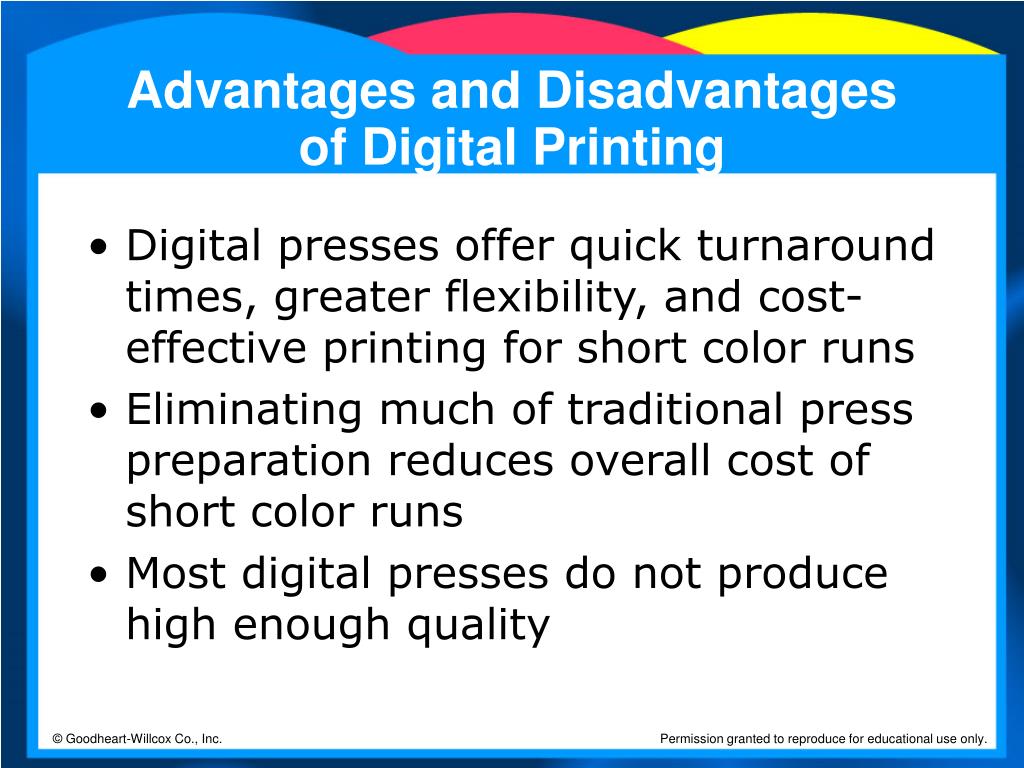Digital Printing Fundamentals Explained
The 9-Minute Rule for Digital Printing
Table of ContentsFacts About Digital Printing UncoveredThe Ultimate Guide To Digital PrintingNot known Facts About Digital PrintingDigital Printing for DummiesThe smart Trick of Digital Printing That Nobody is Talking AboutThe Of Digital Printing
Variable information printing, such as direct mail with customized codes and addresses, is preferably suited for digital printing. Digital fast printing only needs 4 steps of layout, review, printing and binding to obtain everything done. Digital fast printing has an unequaled advantage: print on need.According to PMMI, electronic printing permits brand names and manufacturers to react swiftly to client demands while improving the supply chain, minimizing warehousing price and waste, and appreciating faster time to market. That all audios excellent, however how does this innovation do all that? The major differentiator of these technologies is that there are no set-up costs and no plates with digital printing.
Everything about Digital Printing
According to Wikipedia, the best distinction between electronic printing and typical approaches such as lithography, flexography, gravure, or letterpress - Digital Printing is that there is no need to change printing plates in digital printing, whereas in these analog printing methods the plates are repeatedly changed. This causes quicker turn-around time and decreases cost when using digital printing.
Speedy manufacturing implies obtaining your product to market faster. It likewise means it's simpler and faster to make changes in the future, when you alter a dish, include a SKU, or create seasonal product packaging. Digital printing is extremely flexible, so it's simple to make adjustments to the plan design rapidly. All of it goes back to the plates.
Much more stock can suggest more waste later on. With standard printing approaches, short-run printing is simply not possible. Due to the fact that a fantastic layout can make or damage your item, digital printing continually develops premium, clear and colorful graphics each time. Digital printing on versatile bags includes the brilliant, lively, and accurate graphics that virtually bid consumers to connect and touch them.
Digital printing is the procedure of printing digital-based photos straight onto a variety of media substrates. There is no demand for a printing plate, unlike with countered printing. Digital data such as PDFs or desktop publishing files can be sent directly to the digital printing press to print theoretically, picture paper, canvas, fabric, synthetics, cardstock and various other substrates.
Getting My Digital Printing To Work
According to PMMI, digital printing enables brand names and makers to react swiftly to consumer needs while boosting the supply chain, decreasing warehousing cost and waste, and appreciating faster time to market. That all noises great, however exactly how does this modern technology do all that? The significant differentiator review of these technologies is that there are no set-up fees and no plates with electronic printing.
This results in quicker turnaround time and reduces expense when using digital printing.

Some Known Details About Digital Printing
With traditional printing approaches, short-run printing is simply not feasible. Due to the fact that a terrific layout can make or damage your item, digital printing consistently produces premium, clear and vivid graphics each time.

According to PMMI, electronic printing permits brands and suppliers to react swiftly to client demands while enhancing the supply chain, reducing warehousing expense and waste, and appreciating faster time to market. That all sounds terrific, however how does this innovation do all that? The major differentiator of these technologies is that there are no set up costs and no plates with digital printing.
The Best Guide To Digital Printing
According to Wikipedia, the biggest difference in between digital printing and standard methods such as lithography, flexography, gravure, or letterpress is that there is no requirement to replace printing plates in electronic printing, whereas in these analog printing methods the plates are consistently changed. This leads to quicker turn-around time and lowers expense when making use of digital printing.
Quick manufacturing indicates getting your item to market much faster. It also indicates it's easier and faster to make changes later on, when you transform a recipe, include a SKU, or create seasonal packaging. Digital click here to find out more printing is very adaptable, so it's simple to make adjustments to the package layout promptly. All of it returns to home plates.

The smart Trick of Digital Printing That Nobody is Discussing
Digital printing is the procedure of printing digital-based photos straight onto a range of media substrates. There is no need for a printing plate, unlike with offset printing. Digital documents such as PDFs or desktop computer posting data can be sent directly to the electronic printing machine to publish on paper, photo paper, canvas, fabric, synthetics, cardstock and other substrates.